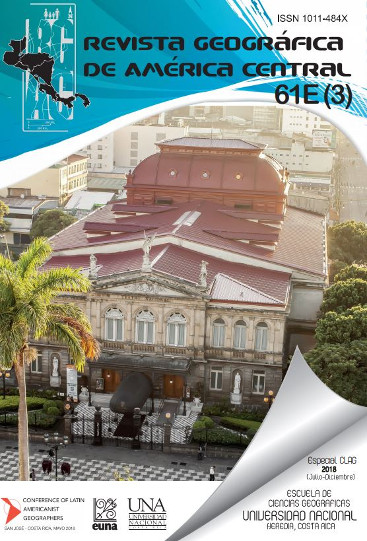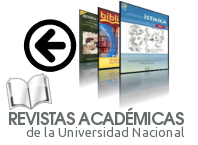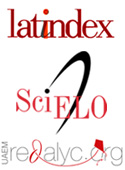Optimizing social-ecological analysis of coupled human-river systems through the integration of conceptual frameworks: the case of the Savegre watershed, Costa Rica
DOI:
https://doi.org/10.15359/rgac.61-3.3Palavras-chave:
social-ecological analysis, watershed, conceptual framework, Savegre, sustainability.Resumo
Social-ecological systems, given their immanent complexity and unpredictability, pose intricate management challenges. Conceptual/analytical frameworks that more holistically integrate coupled social and natural systems and their basic interdependencies and interactions can significantly improve management and research efforts at multiple levels, specifically by accounting for the complex, multi-scalar processes involved, including the dynamics of distal and more proximate causal factors, as well as how they manifest and evolve in space and time. This paper presents a synthesis from a social-ecological analysis of the Savegre river watershed in Costa Rica, a recently designated UNESCO Biosphere Reserve. Through this exercise, the watershed is conceptualized as a coupled social-ecological system, with complex interconnections among social, ecological and physical components, for developing research agendas or specific normative efforts. Syntheses like the one presented here are particularly useful for more in-depth explorations of social-ecological issues, especially collective action problems derived from human-environment interactions at various scales. More effective formal and informal normative solutions to pressing sustainability dilemmas can also be envisioned through similar exercises.
Referências
Acevedo, H., Bustamante, J., Paniagua, L., & Chaves, R. (2002). Ecosistemas de la Cuenca Hidrográfica Del Río Savegre, Costa Rica. Santo Domingo de Heredia: Editorial INBio.
Anderies, J., Janssen, M., & Ostrom, E. (2004). A framework to analyze the robustness of social-ecological systems from an institutional perspective. Ecology and society, 9(1).
Arroyo-Mora, J. P., Sánchez-Azofeifa, G. A., Rivard, B., Calvo, J. C., & Janzen, D. H. (2005). Dynamics in landscape structure and composition for the Chorotega region, Costa Rica from 1960 to 2000. Agriculture, Ecosystems & Environment, 106(1), 27–39.
Binder, C., Hinkel, J., Bots, P., & Pahl-Wostl, C. (2013). Comparison of frameworks for analyzing social-ecological systems. Ecology and Society, 18(4).
Brondizio, E. S., Foufoula-Georgiou, E., Szabo, S., Vogt, N., Sebesvari, Z., Renaud, F. G., … others. (2016a). Catalyzing action towards the sustainability of deltas. Current Opinion in Environmental Sustainability, 19, 182–194.
Brondizio, E. S., Ostrom, E., & Young, O. R. (2009). Connectivity and the governance of multilevel social-ecological systems: The role of social capital. Annual review of environment and resources, 34, 253–278.
Brondizio, E. S., Vogt, N. D., Mansur, A. V., Anthony, E. J., Costa, S., & Hetrick, S. (2016b). A conceptual framework for analyzing deltas as coupled social–ecological systems: an example from the Amazon River Delta. Sustainability Science, 1–19.
Cabello, V., del Moral Ituarte, L., Willaarts, B. A., & Aguilar, M. (2015). River basins as social-ecological systems: Linking levels of societal and ecosystem water metabolism in a semiarid watershed. Ecology and Society, 20(3).
CEDARENA (Centro de Derecho Ambiental y de los Recursos Naturales). (2001). Estudio de tenencia de la tierra cuenca hidrográfica del río Savegre y la Reserva Forestal Los Santos (p. 114). Costa Rica -Proyecto Araucaria.
Collins, S. L., Carpenter, S. R., Swinton, S. M., Orenstein, D. E., Childers, D. L., Gragson, T. L., … others. (2011). An integrated conceptual framework for long-term social–ecological research. Frontiers in Ecology and the Environment, 9(6), 351–357.
Cruz Conejo, L. D., Chacón Ureña, E., & Chacón Zúñiga, R. A. (2012). San Gerardo de Dota: en las montañas del Alto Savegre. San José, Costa Rica: Diseño Editorial MyF.
Delgado-Serrano, M. del M., & Ramos, P. A. (2015). Making Ostrom’s framework applicable to characterise social ecological systems at the local level. International Journal of the Commons, 9(2).
Duraiappah, A. K., Asah, S. T., Brondizio, E. S., Kosoy, N., O’Farrell, P. J., Prieur-Richard, A. H., … Takeuchi, K. (2014). Managing the mismatches to provide ecosystem services for human well-being: A conceptual framework for understanding the new commons. Current Opinion in Environmental Sustainability, 7, 94–100.
Estrada, A., & Zamora, N. (2004). Riqueza, cambios y patrones florísticos en un gradiente altitudinal en la cuenca hidrográfica del río Savegre, Costa Rica. Brenesia, (61), 1–52.
Folke, C., Pritchard Jr, L., Berkes, F., Colding, J., & Svedin, U. (2007). The problem of fit between ecosystems and institutions: ten years later. Ecology and society, 12(1).
Frey, U., & Rusch, H. (2013). Using artificial neural networks for the analysis of social-ecological systems. Ecology and Society, 18(2).
Gago García, C. (2000). Desarrollo sostenible en el medio tropical latinoamericano (el proyecto de desarrollo en la cuenca del río Savegre, Costa Rica). Anales de Geografía de la Universidad Complutense, 20, 253–264.
Galaz, V., Olsson, P., Hahn, T., Folke, C., & Svedin, U. (2008). The problem of fit among biophysical systems, environmental and resource regimes, and broader governance systems: insights and emerging challenges. En O. R. Young, L. A. King, & H. Schroeder (Eds.), Institutions and environmental change: principal findings, applications, and research frontiers (pp. 147–186). Cambridge, Mass: MIT Press.
Gobierno de Costa Rica. (2015, agosto 29). Gobierno decretó salvaguarda ambiental de 25 años para ríos Pacuare y Savegre. Recuperado el 2 de julio de 2017, a partir de http://presidencia.go.cr/comunicados/2015/08/gobierno-decreto-salvaguarda-ambiental-de-25-anos-para-rios-pacuare-y-savegre-2/
Harvey, C. A., & Haber, W. A. (1998). Remnant trees and the conservation of biodiversity in Costa Rican pastures. Agroforestry systems, 44(1), 37–68.
Hinkel, J., Bots, P. W., & Schlüter, M. (2014). Enhancing the Ostrom social-ecological system framework through formalization. Ecology and Society, 19(3), 51.
Hinkel, J., Cox, M. E., Schluter, M., Binder, C. R., & Falk, T. (2015). A diagnostic procedure for applying the social-ecological systems framework in diverse cases. Ecology and Society, 20(1).
Ives, C. D., & Kendal, D. (2014). The role of social values in the management of ecological systems. Journal of Environmental Management, 144, 67–72.
Jones, N., Shaw, S., Ross, H., Witt, K., & Pinner, B. (2016). The study of human values in understanding and managing social-ecological systems. Ecology and Society, 21(1).
Leslie, H. M., Basurto, X., Nenadovic, M., Sievanen, L., Cavanaugh, K. C., Cota-Nieto, J. J., … others. (2015). Operationalizing the social-ecological systems framework to assess sustainability. Proceedings of the National Academy of Sciences, 112(19), 5979–5984.
Liu, J., Dietz, T., Carpenter, S. R., Alberti, M., Folke, C., Moran, E., … Taylor, W. W. (2007). Complexity of coupled human and natural systems. Science, (5844), 1513.
Liu, J., Hull, V., Batistella, M., DeFries, R., Dietz, T., Fu, F., … others. (2013). Framing sustainability in a telecoupled world. Ecology and Society, 18(2).
Liu, J., Mooney, H., Hull, V., Davis, S. J., Gaskell, J., Hertel, T., … others. (2015). Systems integration for global sustainability. Science, 347(6225), 1258832.
McGinnis, M., & Ostrom, E. (2014). Social-ecological system framework: initial changes and continuing challenges. Ecology and Society, 19(2).
MINAE, M. de A. y E. (2004). Plan de Manejo Integrado de la Cuenca Hidrográfica del Río Savegre. San José, Costa Rica: Programa Araucaria.
MINAE-AECI. (2001). Estudio socio-económico en 23 comunidades de la cuenca hidrográfica del río Savegre. San José, Costa Rica: Ministerio de Ambiente y Energía y la Agencia Española de Cooperación Internacional.
Molle, F. (2009). River-basin planning and management: The social life of a concept. Geoforum, 40, 484–494.
Nagendra, H., & Ostrom, E. (2014). Applying the social-ecological system framework to the diagnosis of urban lake commons in Bangalore, India. Ecology and Society, 19(2), 1–18.
Ostrom, E. (2007). A diagnostic approach for going beyond panaceas. Proceedings of the national Academy of sciences, 104(39), 15181–15187.
Ostrom, E. (2009). A General Framework for Analyzing Sustainability of Social-Ecological Systems. Science, (5939), 419.
Partelow, S., & Winkler, K. (2016). Interlinking ecosystem services and Ostrom’s framework through orientation in sustainability research. Ecology and Society, 21(3).
Programa Estado de la Nación. (2016). Capítulo 4. Armonía con la Naturaleza. En Vegésimo Segundo Informe Estado de la Nación. San José, Costa Rica: Programa Estado de La Nación.
Sánchez, J. E., Barrantes, G., & Duran, F. (2004). Distribución, ecología y conservación de la avifauna de la cuenca del río Savegre, Costa Rica. Brenesia, (61), 63–93.
Sanchez-Azofeifa, G. A. (2000). Land use and cover change in Costa Rica: a geographic perspective. En H. Charles, P. Van Laake, C. León, & G. Leclerc (Eds.), Quantifying Sustainable Development: The Future of Tropical Economies (pp. 473–501). San Diego, CA: Academic Press.
Sánchez-Azofeifa, G. A., Daily, G. C., Pfaff, A. S., & Busch, C. (2003). Integrity and isolation of Costa Rica’s national parks and biological reserves: examining the dynamics of land-cover change. Biological Conservation, 109(1), 123–135.
Schlüter, M., Hinkel, J., Bots, P. W., & Arlinghaus, R. (2014). Application of the SES framework for model-based analysis of the dynamics of social-ecological systems. Ecology and Society, 19(1), 36.
SINAC. (2017). Sistematización Desarrollo Sostenible de la Cuenca Hidrográfica del Río Savegre. Puntarenas, Costa Rica: Sistema Nacional De Áreas de Conservación - Ministerio de Ambiente y Energía.
Torres Guevara, L. E. T., Schlüter, A., & Lopez, M. C. (2016). Collective action in a tropical estuarine lagoon: adapting Ostrom’s SES framework to Ciénaga Grande de Santa Marta, Colombia. International Journal of the Commons, 10(1).
USDA (United States Department of Agriculture). (2017). Coffee: World Markets and Trade. United States Department of Agriculture - Foreign Agricultural Service. Recuperado a partir de https://apps.fas.usda.gov/psdonline/circulars/coffee.pdf
Vörösmarty, C. J., McIntyre, P. B., Gessner, M. O., Dudgeon, D., Prusevich, A., Green, P., … others. (2010). Global threats to human water security and river biodiversity. Nature, 467(7315), 555–561.
Young, O. R., Berkhout, F., Gallopin, G. C., Janssen, M. A., Ostrom, E., & Van der Leeuw, S. (2006). The globalization of socio-ecological systems: an agenda for scientific research. Global Environmental Change, 16(3), 304–316.
Young, O. R., King, L. A., & Schroeder, H. (Eds.). (2008). Institutions and environmental change: principal findings, applications, and research frontiers. Cambridge, Mass: MIT Press.
Downloads
Publicado
Como Citar
Edição
Seção
Licença
Política proposta para revistas que oferecem Acesso Aberto
Os autores que publicam nesta revista concordam com os seguintes termos:
a. Os autores mantêm os direitos autorais e garantem à revista o direito de ser a primeira publicação do trabalho, sob a Licença Creative Commons https://creativecommons.org/licenses/by-nc-sa/4.0/deed.es, que permite que outros compartilhar com reconhecimento da autoria do trabalho e da publicação inicial nesta revista.
b. Os autores podem estabelecer separadamente acordos adicionais para a distribuição não exclusiva da versão do trabalho publicado na revista (por exemplo, colocá-la em repositório institucional ou publicá-la em livro), com reconhecimento de sua publicação inicial nesta revista. Esses acordos adicionais devem respeitar os termos da licença: ou seja: não envolver lucro e compartilhar com a mesma licença.
c. Os autores são incentivados a arquivar a versão/PDF pós-impressão ou do editor em repositórios de acesso aberto.







 REVGEO está licenciado sob https://creativecommons.org/licenses/by-nc-sa/4.0/deed.es
REVGEO está licenciado sob https://creativecommons.org/licenses/by-nc-sa/4.0/deed.es
.svg_4.png)

_(1).png)
_(1)_(1)_(1)_1.png)
(2)(1)(1)(1).png)
